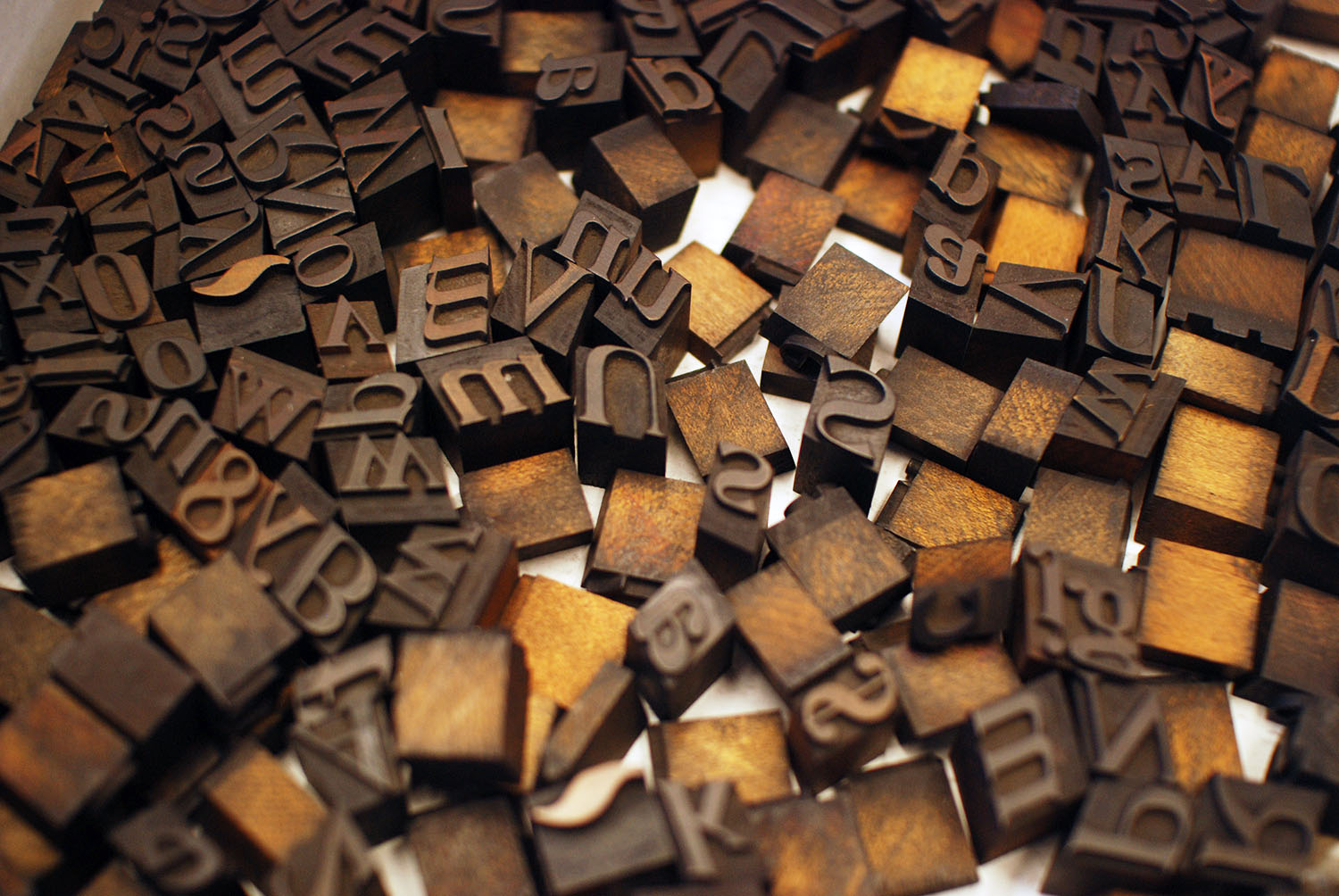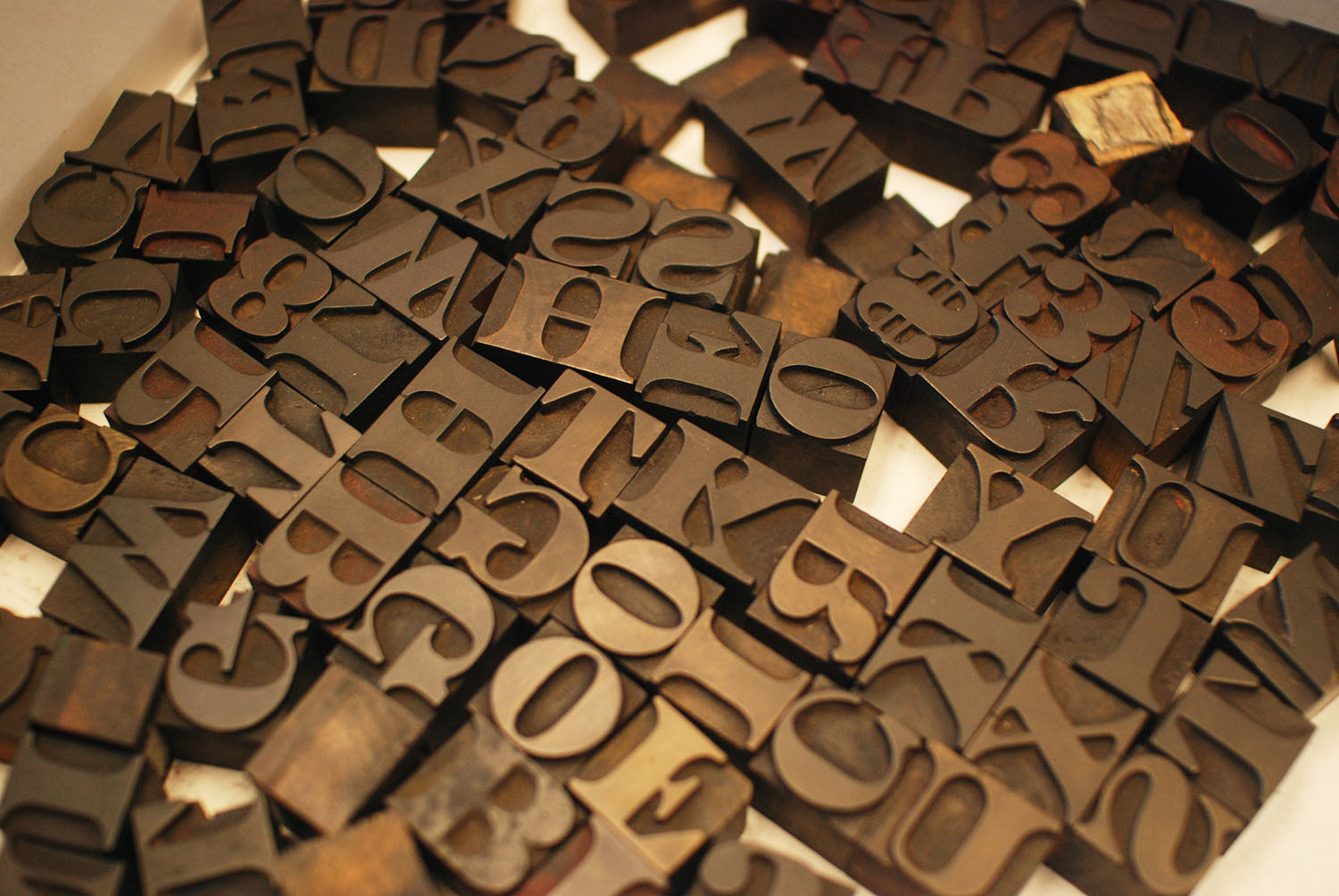Read More
Nineteenth-century Old Style wood type was modeled on traditional serif text faces that dated back to the 1540s. As a reaction to the Modern style letter so predominant at the time, the nineteenth-century revival of this style began in the 1840s with the Chiswick Press in England publishing books using Caslon’s eighteenth-century Old Style (lead) romans. Old Style metal typefaces appeared in the United States in the 1857 specimen book of the Cortelyou & Giffing foundry of New York, and later in Lawrence Johnson’s 1859 Typographic Advertiser. Old Style revivals enjoyed broad popularity as text faces into the twentieth century.
American manufacturers also began translating serif text faces into large-scale wood type in the 1850s. David Knox included a Modern-style Roman Light Face in his 1858 Specimens of Wood Type. Shortly thereafter, J.G. Cooley showed an Old Style wood type in his c.1859 Specimens of Wood Type. William Page acquired Cooley’s wood type manufacturing company in 1869, and showed an Old Style as early as 1870. By the 1880s, Old Styles were consistently shown by all wood type manufacturers, and continued to be popular as display faces into the twentieth century.
Fat Faces are early nineteenth-century display faces with exaggerated stroke contrast that pair very “fat” thick strokes with hairline serifs and thin strokes.
Read More
By the end of the eighteenth century, text types had been developed into their most refined form. The classical modern face was an upright roman with hairline serifs, defined by a strong contrast of strokes and a precise geometric construction. The extra bold display types known as Fat Faces were developed from this style, and distinguished by an even more exaggerated stroke contrast. The thick strokes were made dramatically fatter and the thin strokes remained hairlines. Fat Faces are considered the first typefaces designed specifically for display or jobbing, rather than for book work.
The first Fat Face in metal is attributed to the Englishman Robert Thorne after 1803. The first instance of a Fat Face in wood type was in the first wood type specimen book ever produced: Darius Wells’s 1828 Darius Wells, Letter Cutter. Of the thirteen pages in his specimen book, nine pages show Fat Face types. Fat Faces were produced by all American wood type manufacturers until they began to decline in popularity in the late 1840s. Page introduced Aetna as a sturdier display roman in his 1870 Specimens of Wood Type, to replace his by-then outmoded Fat Face romans.




















